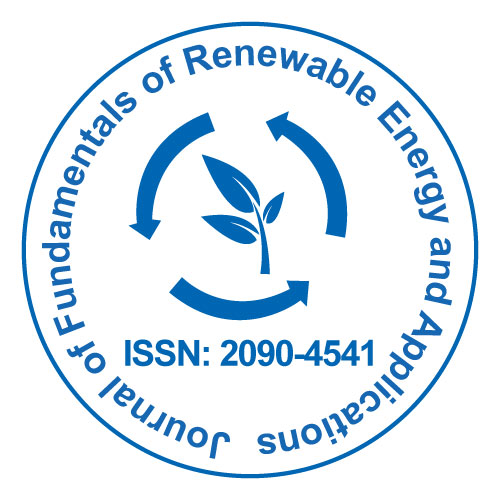
Journal of Fundamentals of Renewable Energy and Applications
Open Access
ISSN: 2090-4541
+44 1300 500008

ISSN: 2090-4541
+44 1300 500008
Hayati Olgun, Babak Keivani and Berrin Engin
Ege University Solar Energy Institute, Turkey
TUBITAK MARMARA Research Center, Turkey
Posters & Accepted Abstracts: J Fundam Renewable Energy Appl
The total recoverable biomass energy potential of Turkey was estimated as 8.6 Mtoe. A very limited potential of this biomass is used for the energy demand of the country with industrial combustion technologies. On the other hand, Turkey is a rich country in lignite resources. Turkey√ʬ?¬?s proved recoverable lignite reserves were 14 billion tons in 2015. The calorific values of these lignites are generally medium and low. These lignites have very high sulfur and ash contents. Turkey imports 72% of its total primary energy. Energy demand increases every year because of the development rate of 5-7%/year. Therefore, it will be wise to use lignite and biomass sources in energy production with a suitable combustion technology. One of the suitable technology for burning low calorie, high ash and high sulfur lignites with biomass is fluidized bed. The one of the advantages of fluidized bed combustion system is co-firing of two different types of fuels at the same time. Co-firing has the potential to reduce emissions from coal-fueled generation. Contribution of biomass to emission reduction in co-firing with the coal is limited due to their different structural natures. It is possible to increase this reduction with torrefaction of biomass (biocoal). In addition, oxygen-enriched combustion is a promising option to improve CO2 capture. This work cover the biocoal production from pine chips by screw type torrefaction system and co-firing with Turkish lignite in circulating fluidized bed combustion under air and oxygen-enriched atmosphere. The torrefaction system up to 5 kg/h is designed and manufactured based on the principle of rotating screws (auger) for passing biomass through the reactors. 100 kg of biocoal was produced under 3000C reactor temperatures and 30 min residence time conditions for combustion experiments. In the combustion experiments, 30 kWth fluidized bed combustion system was used. The laboratory scale CFBC system consists of one fuel feeder, a combustor, cyclone, down comer, bag filter, FD fan and ID fan. The combustor is a 3"AISI 310 stainless steel pipe of 108 mm inner diameter and 6 m height. Air is fed to the system by an air blower with a head pressure of 200 mbar. Fuel mixtures were fed by a screw feeder. Fuel feeding rate is controlled by a frequency controller. Air and oxygen flow rate is controlled by mass flow controller (MFC). All co-firing experiments with biomass and biocoal blends of lignite have been carried out with air and oxygen-enriched conditions. In this study, the effect of oxygen-enriched conditions was investigated. Tests were carried out with one lignites one biomass and one biocoal obtained from biomass and their blends. Biomass share is increased up to 30% and biocoal share is increased up to 50%. It was found that the fuel mixtures up to 50% of biocoal were combusted effectively in the system whereas burning difficulties were determined in burning experiments with 30% biomass mixture. The oxygen concentration in the oxidant was kept between 21 and 27% for the oxygen-enriched combustion experiments. It is concluded that, oxygen-enriched co-firing is an option for reducing SO2 emissions and carbon capture and storage.